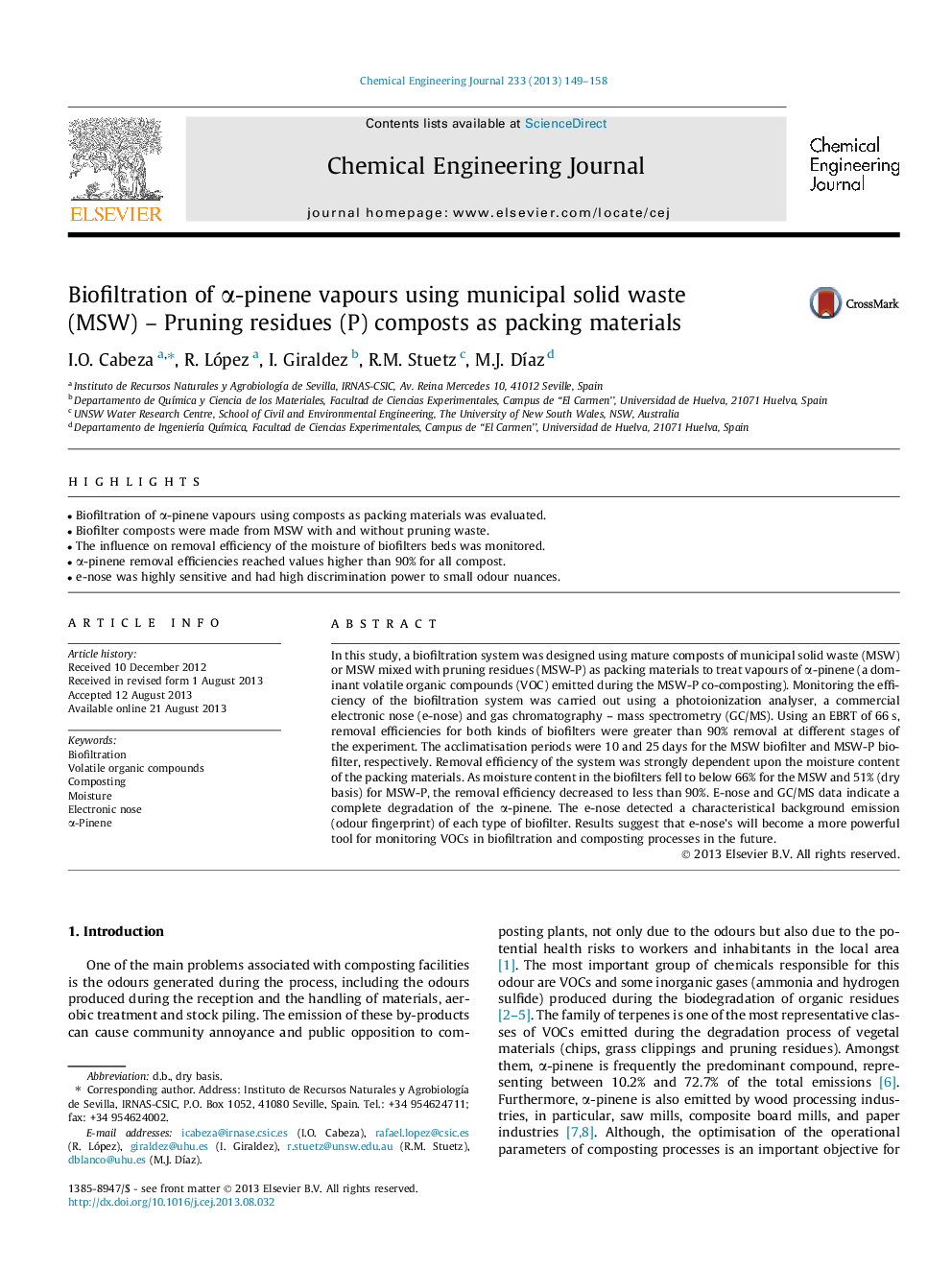| Article ID | Journal | Published Year | Pages | File Type |
|---|---|---|---|---|
| 6586702 | Chemical Engineering Journal | 2013 | 10 Pages |
Abstract
In this study, a biofiltration system was designed using mature composts of municipal solid waste (MSW) or MSW mixed with pruning residues (MSW-P) as packing materials to treat vapours of α-pinene (a dominant volatile organic compounds (VOC) emitted during the MSW-P co-composting). Monitoring the efficiency of the biofiltration system was carried out using a photoionization analyser, a commercial electronic nose (e-nose) and gas chromatography - mass spectrometry (GC/MS). Using an EBRT of 66 s, removal efficiencies for both kinds of biofilters were greater than 90% removal at different stages of the experiment. The acclimatisation periods were 10 and 25 days for the MSW biofilter and MSW-P biofilter, respectively. Removal efficiency of the system was strongly dependent upon the moisture content of the packing materials. As moisture content in the biofilters fell to below 66% for the MSW and 51% (dry basis) for MSW-P, the removal efficiency decreased to less than 90%. E-nose and GC/MS data indicate a complete degradation of the α-pinene. The e-nose detected a characteristical background emission (odour fingerprint) of each type of biofilter. Results suggest that e-nose's will become a more powerful tool for monitoring VOCs in biofiltration and composting processes in the future.
Keywords
Related Topics
Physical Sciences and Engineering
Chemical Engineering
Chemical Engineering (General)
Authors
I.O. Cabeza, R. López, I. Giraldez, R.M. Stuetz, M.J. DÃaz,
